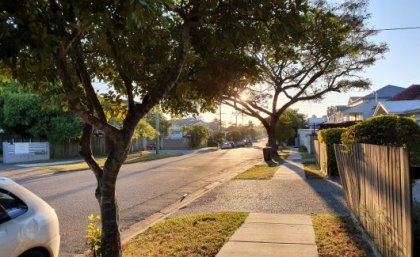
Researchers say more investment in tree planting is needed after discovering
A University of Queensland study counted trees in three Brisbane suburbs of varying average income levels: from low (Deagon), to middle (Riverhills) and higher-income suburbs (Parkinson).
Senior lecturer in Urban Planning at UQ’s School of Earth and Environmental Sciences, Dr Dorina Pojani, said like many other low-income suburbs globally, Deagon was being forced to swelter through rising temperatures and more frequent heatwaves.
“We found that Deagon has approximately 77 street trees per kilometre, 46 per cent less than Riverhills, which has 113 street trees per kilometre,” Dr Pojani said.
“Parkinson was found to have 87 street trees per kilometre, 12 per cent less than Riverhills.”
“Deagon’s lack of trees compared to the other two suburbs is a significant inequity, and if left unaddressed it has the potential to become a wider environmental justice issue.
“We’re standing on the edge of a situation where low-income suburbs bear the physical and financial brunt of climate-driven temperature increases, and lives are at risk.
“Trees not only protect people from the harshness of the sun outdoors, they can also reduce the need for air conditioning.
UQ Environmental Science and Urban Planning graduate, Sean Patton, whose Honours thesis formed the basis of this research, said more money needed to be spent on planting trees in suburbs like Deagon.
“The Brisbane City Council’s tree planting budget for 2020 was $19.7 million, but it’s worth investing more so residents have better access to sun protection, especially in a city where local government encourages active transport,” Mr Patton said.
“A full benefit cost analysis, as well as a wider survey of Brisbane, would determine the budget needed, but considering the health risks from increasing temperatures, we certainly need more than what we’re currently seeing.
“The benefits from trees increase as they grow older, so the sooner we get started planting more street trees across these at-risk suburbs, the better.”
The research has been published in Australian Planner.
Media: Dr Dorina Pojani, d.pojani@uq.edu.au, +61 (0)473 989 847, Mr Sean Patton, +61(0)448 231 312, Faculty of Science Media, science.media@uq.edu.au, +61 (0)438 162 687.
.jpg)









